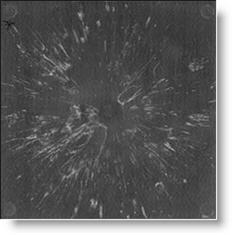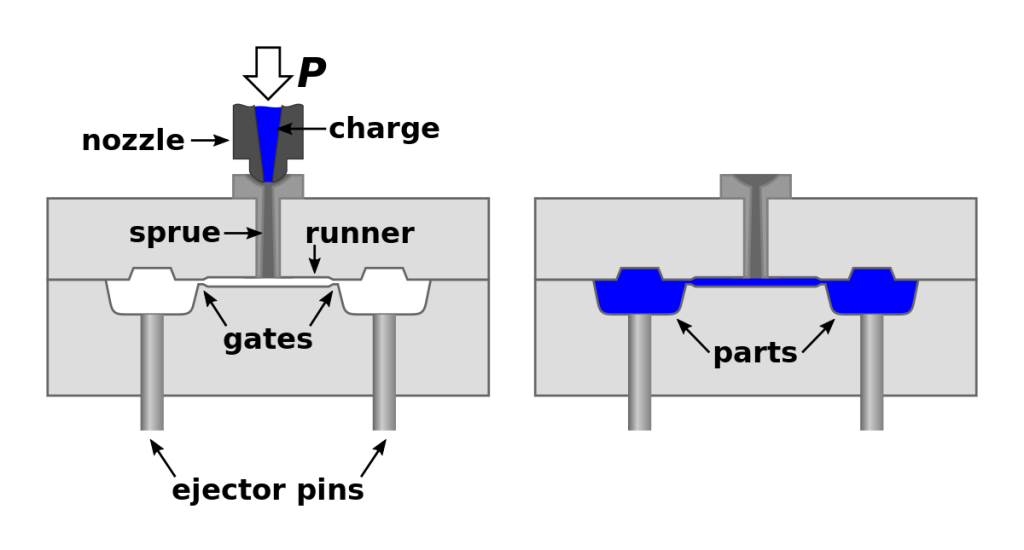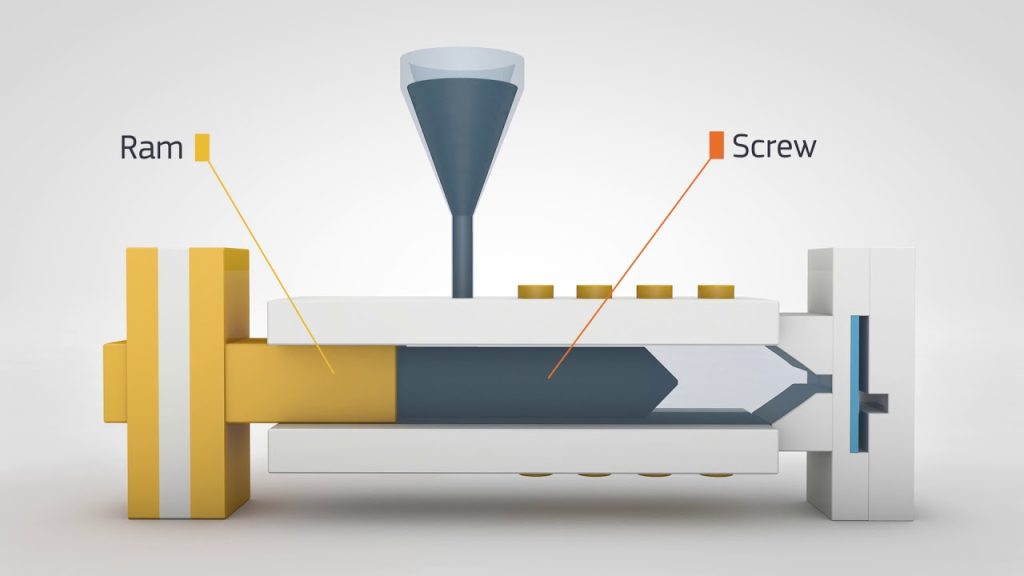Table of Contents
Splay marks on injection-molded parts can be a frustrating and costly problem. They appear as unsightly streaks or veins on the surface of the part, and can compromise its strength and durability. Fortunately, there are several methods for fixing splay injection molding that can help you achieve the high-quality results you want.
In this article, we will explore what splay marks are, what causes them, and how to fix them. Whether you’re a seasoned injection molding professional or just getting started, these tips and techniques can help you minimize splay marks and produce parts that meet your exacting standards. So let’s dive in and learn how to fix splay injection molding once and for all!
How to Fix Splay Injection Molding?
Splay marks can be a common issue in injection molding. They occur when the molten plastic is not properly flowing into the mold cavity, and instead, small droplets or bubbles form on the surface of the part. This can lead to a decrease in quality and an increase in scrap rate. In this article, we will discuss how to fix splay injection molding.
1. Check the Temperature
The first step in fixing splay injection molding is to check the temperature of the plastic. If the temperature is too high, the plastic may break down, causing splay marks. If the temperature is too low, the plastic may not flow properly, causing splay marks. It is essential to have a consistent temperature throughout the molding process.
To fix splay marks caused by temperature issues, adjust the temperature of the plastic accordingly. You may need to increase or decrease the temperature depending on the issue. It is essential to make small adjustments and test the mold before making any significant changes.
2. Check the Injection Speed
The injection speed can also cause splay marks in injection molding. If the plastic is injected too quickly, it may not have enough time to flow into the mold cavity, causing splay marks. If the injection speed is too slow, the plastic may start to solidify before it fills the mold cavity, causing splay marks.
To fix splay marks caused by injection speed, adjust the injection speed of the plastic. You may need to increase or decrease the injection speed depending on the issue. It is essential to make small adjustments and test the mold before making any significant changes.
3. Check the Venting
Another common cause of splay marks is poor venting. When the plastic is injected into the mold cavity, air must escape to allow the plastic to fill the cavity completely. If there is not enough venting, the air may become trapped, causing splay marks.
To fix splay marks caused by poor venting, check the venting of the mold. You may need to increase the number or size of vents to allow the air to escape properly. It is essential to test the mold after making any changes to the venting.
4. Check the Mold Design
The mold design can also cause splay marks in injection molding. If the mold is not designed correctly, the plastic may not flow properly, causing splay marks. It is essential to have a well-designed mold that allows the plastic to flow smoothly into the mold cavity.
To fix splay marks caused by mold design issues, check the mold design. You may need to modify the mold to allow the plastic to flow more smoothly. It is essential to test the mold after making any changes to the design.
5. Check the Plastic
The plastic itself can also cause splay marks in injection molding. If the plastic is not of good quality or is contaminated, it may not flow properly, causing splay marks. It is essential to use high-quality plastic and to keep it free from contamination.
To fix splay marks caused by plastic issues, check the quality of the plastic. You may need to switch to a higher quality plastic or ensure that the plastic is free from contamination. It is essential to test the mold after using a different type of plastic.
6. Check the Injection Pressure
Injection pressure can also cause splay marks in injection molding. If the injection pressure is too high, the plastic may not flow properly, causing splay marks. If the injection pressure is too low, the plastic may not fill the mold cavity completely, causing splay marks.
To fix splay marks caused by injection pressure, adjust the injection pressure of the plastic. You may need to increase or decrease the injection pressure depending on the issue. It is essential to make small adjustments and test the mold before making any significant changes.
7. Check the Cooling Time
The cooling time can also cause splay marks in injection molding. If the plastic is not allowed to cool properly, it may not solidify completely, causing splay marks. If the plastic is allowed to cool too much, it may become brittle, causing splay marks.
To fix splay marks caused by cooling time, adjust the cooling time of the plastic. You may need to increase or decrease the cooling time depending on the issue. It is essential to make small adjustments and test the mold before making any significant changes.
8. Check the Screw Speed
The screw speed can also cause splay marks in injection molding. If the screw speed is too high, the plastic may not flow properly, causing splay marks. If the screw speed is too low, the plastic may not fill the mold cavity completely, causing splay marks.
To fix splay marks caused by screw speed, adjust the screw speed of the plastic. You may need to increase or decrease the screw speed depending on the issue. It is essential to make small adjustments and test the mold before making any significant changes.
9. Check the Injection Time
The injection time can also cause splay marks in injection molding. If the injection time is too short, the plastic may not flow properly, causing splay marks. If the injection time is too long, the plastic may start to solidify before it fills the mold cavity, causing splay marks.
To fix splay marks caused by injection time, adjust the injection time of the plastic. You may need to increase or decrease the injection time depending on the issue. It is essential to make small adjustments and test the mold before making any significant changes.
10. Benefits and Vs of Fixing Splay Injection Molding
Fixing splay injection molding can lead to many benefits, including improved part quality, decreased scrap rate, and increased productivity. By addressing the issue and making necessary adjustments, you can ensure that your injection molding process is running smoothly and efficiently.
On the other hand, not fixing splay injection molding can lead to significant problems, including decreased part quality, increased scrap rate, and decreased productivity. It is essential to address the issue as soon as possible to prevent these problems from occurring.
In conclusion, splay injection molding can be a common issue, but it can be fixed with the proper adjustments and testing. By checking the temperature, injection speed, venting, mold design, plastic, injection pressure, cooling time, screw speed, and injection time, you can ensure that your injection molding process is running smoothly and efficiently.
Freequently Asked Questions:
Here are some frequently asked questions about how to fix splay injection molding:
What is splay in injection molding?
Splay is a cosmetic defect that occurs during the injection molding process. It appears as a whitish streak on the surface of the molded part and is caused by the premature release of volatile gases from the plastic material. Splay can be caused by a number of factors, including moisture in the plastic material, poor machine maintenance, and improper processing conditions.
To fix splay in injection molding, it is important to identify the root cause of the problem. Once the cause has been identified, steps can be taken to eliminate it. This may involve drying the plastic material, cleaning the machine, adjusting processing conditions, or changing the plastic material altogether.
How can splay be prevented in injection molding?
Splay can be prevented in injection molding by taking several steps. First, it is important to use high-quality plastic material that is free from moisture and other contaminants. Second, the mold should be designed with proper venting to allow volatile gases to escape. Third, the machine should be well-maintained to ensure that it is operating properly. Finally, the processing conditions should be optimized to prevent premature release of volatile gases.
By taking these steps, splay can be prevented in injection molding, resulting in higher-quality molded parts and improved efficiency in the manufacturing process.
What are some common causes of splay in injection molding?
There are several common causes of splay in injection molding, including moisture in the plastic material, poor machine maintenance, and improper processing conditions. Moisture in the plastic material can cause volatile gases to be released prematurely, leading to splay. Poor machine maintenance can result in degraded plastic material that is more likely to cause splay. Improper processing conditions, such as excessive pressure or temperature, can also cause splay.
To fix splay in injection molding, it is important to identify the specific cause of the problem and take steps to eliminate it. This may involve drying the plastic material, cleaning the machine, adjusting processing conditions, or changing the plastic material altogether.
What are the effects of splay on injection molding?
The effects of splay on injection molding can be both cosmetic and functional. Cosmetically, splay appears as a whitish streak on the surface of the molded part, which can detract from its appearance. Functionally, splay can weaken the part by creating voids or reducing its overall strength. Additionally, splay can increase the reject rate of molded parts, resulting in decreased efficiency in the manufacturing process.
To prevent the effects of splay on injection molding, it is important to identify the root cause of the problem and take steps to eliminate it. This may involve drying the plastic material, cleaning the machine, adjusting processing conditions, or changing the plastic material altogether.
Can splay be fixed in injection molding?
Yes, splay can be fixed in injection molding by identifying the root cause of the problem and taking steps to eliminate it. This may involve drying the plastic material, cleaning the machine, adjusting processing conditions, or changing the plastic material altogether. By fixing splay, the quality of the molded parts can be improved, resulting in higher efficiency in the manufacturing process.
However, it is important to note that prevention is always better than cure. By taking steps to prevent splay in injection molding, the need for fixing it can be minimized, resulting in lower reject rates and increased efficiency in the manufacturing process.
In conclusion, fixing splay injection molding is a crucial task that requires careful attention to detail. By following the steps outlined above, you can successfully identify the cause of splay and take the necessary steps to fix it.
Remember to always start by examining the resin and ensuring that it is dry and free of contaminants. Next, check your mold to make sure it is functioning properly, and adjust your process parameters as needed to achieve the desired results.
By taking a systematic approach, you can minimize the risk of splay in your injection molding process and produce high-quality parts with ease. So don’t let splay hold you back – take action today and start optimizing your production process for success.
Request a quote today!
[contact-form-7 id="1578" title="Contact form"]
Please compress the file into a ZIP or RAR file before uploading. Alternatively, send through your RFQ by email.
enquires@unitymanufacture.com





